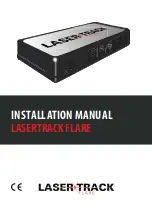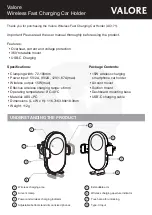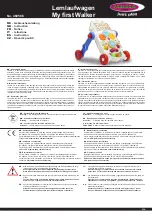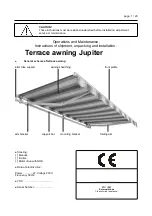
DAKEN SPRAYERS
Serious injury can occur if the vehicle on which the sprayer is mounted is driven unsafely.
!
WARNING
OPERATION - IMPORTANT SAFETY INFORMATION
[continued]
TRANSPORTING SAFETY:
Before you fill the sprayer, review the following information with regard to handling accidents.
Chemical spills, sprayer leaks, personal contamination, and poisoning are accident situations which you may
encounter.
All require an immediate response – See instructions below.
!
WARNING
- 18 -
Sprayer leak
In the event that the pump develops a leak while spraying chemicals, you must
immediately
stop spraying
.
Turn off power to the sprayer and follow the directions below, as applicable.
Bodily chemical
contact
Personal contamination can occur when chemicals splash, spill, or spray directly onto a person.
1.
Follow the emergency first aid instructions on the chemical label listed in the “First Aid”
or “Statements of Practical Treatment” section.
General procedures include:
a)
Eyes – immediately flush with water or follow other directions as specified on the chemical label.
b)
Skin - immediately wash all contaminated skin surfaces with soap and water, or follow
directions as specified on the chemical label.
c)
Clothing - remove contaminated clothing immediately. Dispose of heavily contaminated
clothing per the instructions on the chemical label for safe chemical/container disposal.
2.
Seek medical advice if instructed on the label, or if the victim experiences symptoms of harmful
effects such as burning, swelling, nausea, chest pain, difficulty breathing, dizziness or confusion.
When seeking medical advice, be sure to bring the chemical product label.
•
Read vehicle instructions.
Review safety instructions in your vehicle manual with regard to carrying heavy cargo loads.
•
Driver age.
You must be 16 years of age or older to drive the vehicle with the filled sprayer attached.
•
Vehicle handling.
Be aware that vehicle handling will be affected when driving with the filled sprayer. Exercise caution to
avoid loss of control or rollover:
•
Keep speed to a minimum
so you can maintain control at all times. Reduce speed prior to turns.
•
Allow for more distance to stop.
•
Avoid any sudden
steering maneuvers, starts, or stops that could create liquid sloshing in the sprayer and instability.
•
Rough or sloped terrain.
Slow down and exercise extra caution on rough or sloped terrain in order to reduce risk of rollover.
Pick the most level route possible when transporting across fields. Drive up and down slopes that cannot be avoided, rather
than across. Use a vehicle equipped with a Roll Over Protection System (ROPS) if you will be operating on non-level terrain.
•
Reduced visibility.
Be aware that visibility may be reduced with sprayer attached. Be extra cautious when backing up or
turning.
•
Ride / transport.
Never ride or transport cargo on the sprayer.
•
Under the influence.
Never transport or operate this sprayer while under the influence of alcohol, drugs, or medication
•
Unattended.
Before leaving the sprayer unattended, turn off both the vehicle and sprayer, and set vehicle brakes.
CHEMICAL ACCIDENTAL PROCEDURES:
Содержание D200SS
Страница 31: ......














































